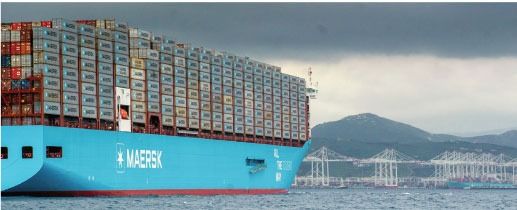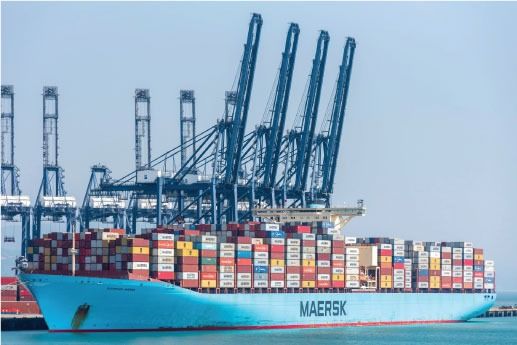- info@ficci.org.bd
- |
- +880248814801, +880248814802
- Contact Us
- |
- Become a Member
- |
- |
- |
- |
- |

An Economy driven by export business
Bangladesh's trade success story has been driven by its globally competitive ready-made garment (RMG) sector and a young, industrious population. The RMG sector contributes to almost 80% of the country's export revenues, contributes to over 11% of the GDP and makes Bangladesh the world's second-largest garment exporter. It creates employment for approximately 4.4 million workers. At the heart of this trade engine lies Chattogram Port, which handles over 90% of the country's import and export cargo. Its importance to national GDP, export earnings, and employment is undeniable.
Keeping up with growing trade
Over the last few years, trade has grown significantly in and out of Bangladesh, putting immense pressure on its logistics infrastructure and ecosystem. The port's capacity and efficiency, on the other hand, have not been able to grow at the same pace. If Bangladesh is to maintain its momentum, Chattogram Port must evolve from a congested bottleneck into a modern, high-performing trade gateway.

The cost of inefficiency
The core challenge at Chattogram is not simply about infrastructure - it is about performance. For example, the average dwell time for containers exceeds 11 days, compared to the 3-day regional benchmark. Berth availability remains limited, and manual or outdated handling systems slow cargo flow. These inefficiencies impose real costs on businesses. Exporters are forced to maintain high buffer stock levels, rely on expensive emergency airfreight, or risk missing critical delivery windows. For RMG exporters, where speed-to-market is essential, even a single day of delay can mean cancelled orders or discounted prices. Ultimately, it is not just port users who pay the price - Bangladesh's reputation as a reliable sourcing destination is at stake.
Learning excellence from global operators
There is an incredible opportunity for Chattogram Port and Bangladesh's trade ecosystem to learn from global operators who have overcome similar challenges through well-structured public-private partnerships. In Morocco, the development of Tanger Med Port through private investment and professional terminal management reduced dwell times from over a week to under 48 hours, while attracting billions in new industrial activity. India's Jawaharlal Nehru Port Trust (JNPT), once congested and state-run, became South Asia's top container port by adopting a landlord model and bringing in global terminal operators. In both cases, pricing frameworks were designed to ensure fair returns to investors, but were also linked to performance. These success stories show that when governments, regulators, and private operators align around outcomes, the result is faster cargo flow, lower logistics costs, and stronger trade competitiveness.

How modernizing Chattogram can unlock its full potential
Chattogram's existing footprint can be significantly enhanced by adding berth capacity, investing in modern handling equipment, and digitizing cargo flows, which would dramatically reduce wait times. However, achieving this requires substantial investment, and such an investment will only occur if there is confidence in stable, performance-linked pricing. Terminal handling charges (THC), often less than 5% of total logistics costs, are not the real barrier to trade competitiveness. In fact, under-pricing THC may lead to underinvestment, which perpetuates inefficiencies. A smarter approach is to align tariffs with service standards and reinvestment commitments. This creates a virtuous cycle: better service allows exporters to meet delivery windows, attract more orders, and justify the investment in efficiency. Moreover, by modernizing its port operations, Bangladesh can enhance its ease-of-doing-business ranking, attract more foreign direct investment, and support diversification beyond garments. For the local community, it can enhance port safety and a future-fit, skilled workforce at the core of operations.
A way forward: performance-driven collaboration
Chattogram's future depends on enhanced and better-managed infrastructure. Reforming the port's governance model to allow greater private sector participation - with accountability, transparency, and performance benchmarks - will be key. Tariff-setting mechanisms should be depoliticised and designed to enable cost recovery and service improvement. Most importantly, all stakeholders must rally around a shared goal: making Chattogram a source of national pride and a driver of global trade. With bold but balanced reform, Chattogram can shift from being a bottleneck to becoming Bangladesh's strongest asset in a fast-moving global economy.





